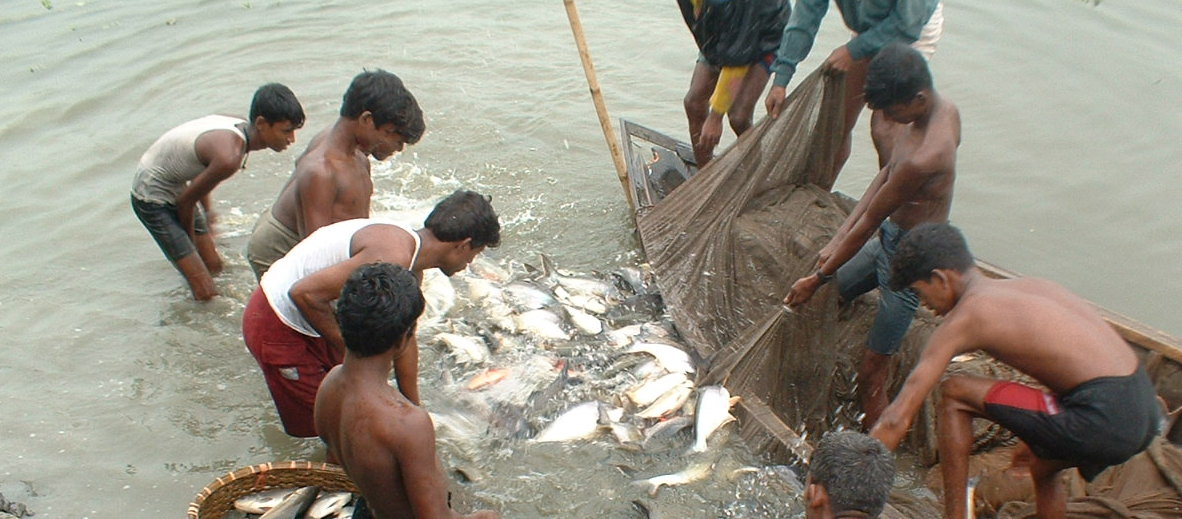
Tilapia and pangas are the two most important fin fish species cultivated in Bangladesh. Aquaculture in the country has suffered from food safety issues due to microbial contamination, which harmed both the health of domestic consumers and the country’s access to the international markets. Fish can be contaminated with harmful microorganisms, including antibiotic resistant bacteria at various stages of production and supply chain. Limited work has been done to systematically document this problem compared to studies focusing on other food animal species, including poultry and livestock. In this study we aim to address this knowledge gap by working on the following objectives:

In Phase 1 we estimate the prevalence of enteric pathogens (Vibrio, Shigella, Salmonella, Toxigenic E. coli, and Cryptosporidium) and concentrations of fecal contamination (E. coli and antibiotic resistant E. coli) on fish sold in the markets (Objective 1). We use behavioral analytical approaches including semi-structured surveys, in-depth interviews, observations, and market-mapping exercises with different actors in markets and supply chain to identify practices affecting pathogen loads on fish in retail markets and identify key actors to train in a future intervention (Objective 2). Subsequently, we will analyze samples from different stages of fish supply chain (Objective 3) to estimate changes in fecal contamination and the most prevalent pathogens (identified in Objective 1).
In Phase 2, we will develop quantitative probabilistic risk-assessment models to mathematically describe how prevalence levels of the chosen microorganism alter as tilapia and pangas move along in the aquaculture production and supply chain (Objective 4). These models will be used to perform sensitivity and scenario analysis to identify the effect of potential intervention strategies in reducing the risk (Objective 5).
This study will provide data on microbiological quality of fish at retail markets and along the supply chain. The study will provide an understanding of how behavioral practices among different value-chain actors impact the load of microbial pathogens on fish, and the key players to train in a future intervention study. Results and data from this study will support science-based decisions on the most effective methods and key actors/locations to intervene to reduce microbial contamination of fish in informal markets of Bangladesh. Our activity contributes to the current efforts of the U.S. Government by improving the livelihood of fish value-chain actors.
We will organize hands-on training for laboratory scientists from local food-safety laboratories on sample collection, processing, and microbiological analysis of fish and environmental samples. We will mentor Bangladeshi professionals from the Ministry of Fisheries already trained in risk analysis in conducting quantitative microbial risk assessment using data collected in Objective 1. We anticipate that at least three Bangladeshi Master of Science students will be trained, and they will conduct their theses with the activity. Two students will be involved in laboratory analysis and one in risk-assessment modeling activities.
The prevalence activity is inclusive of the food for women and youth, who will be eating, and the selection of fish to test is purposively one that represents the protein consumed by the poorest. The value-chain analysis will include woman and youth who can be the key players in aquaculture value chains. The proposed risk-analysis activities will capture in the analyses exposure to microbial pathogens by different income groups based on total dietary studies using secondary data of fish consumption patterns in Bangladesh. Further, women, men, and students will partake in food-safety capacity-building efforts.
Executive Summary of Results and Findings
Final Technical Report: Foodborne Pathogens in Bangladesh
Learn More
Addressing Food Safety in Aquaculture Systems in Developing Countries
